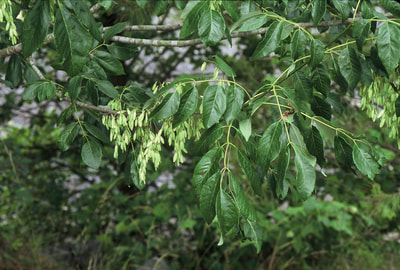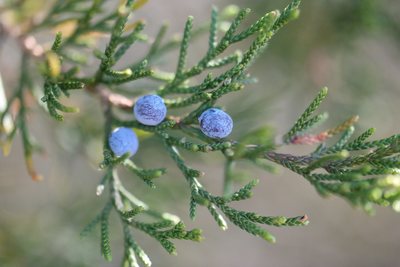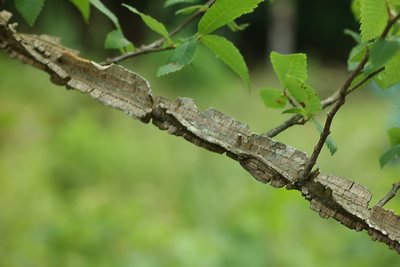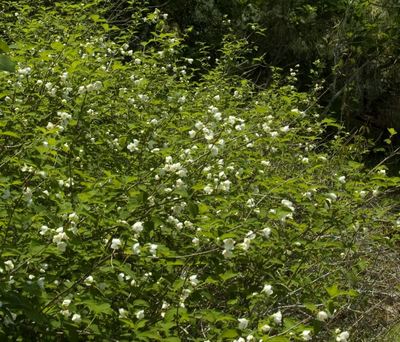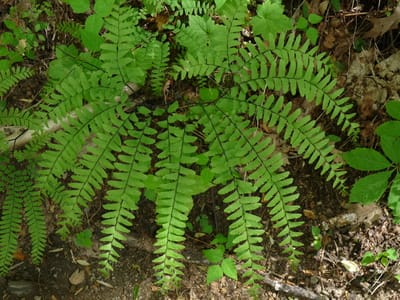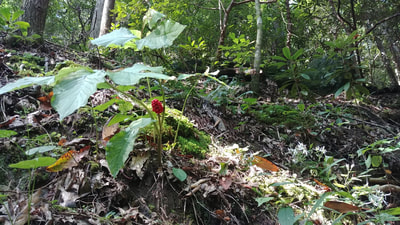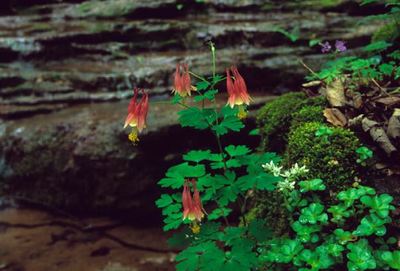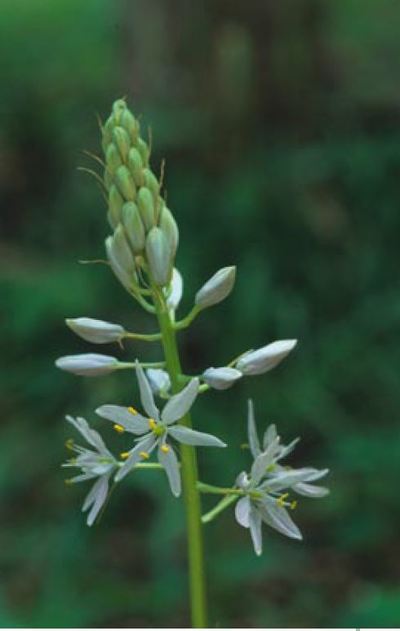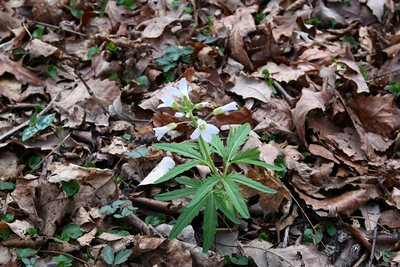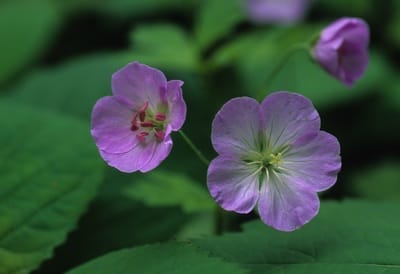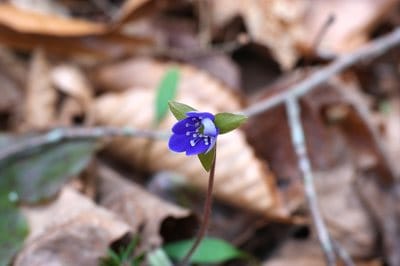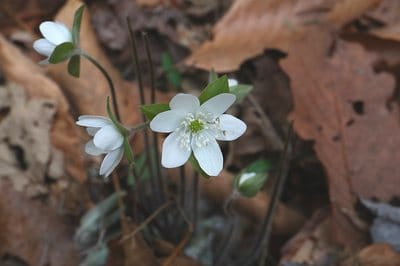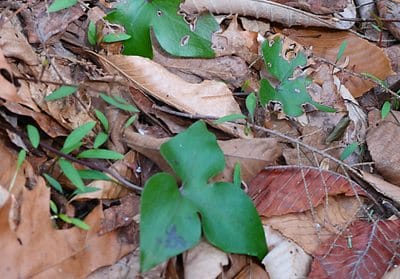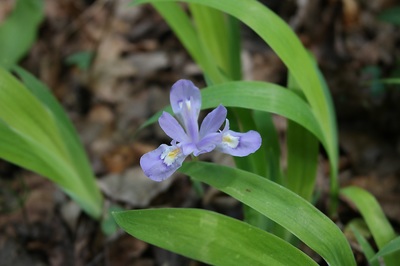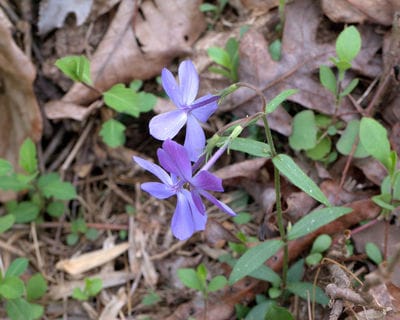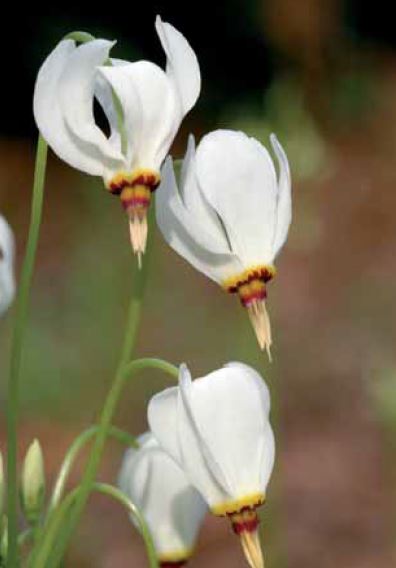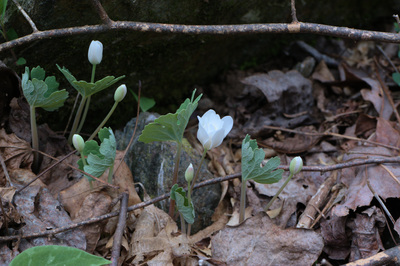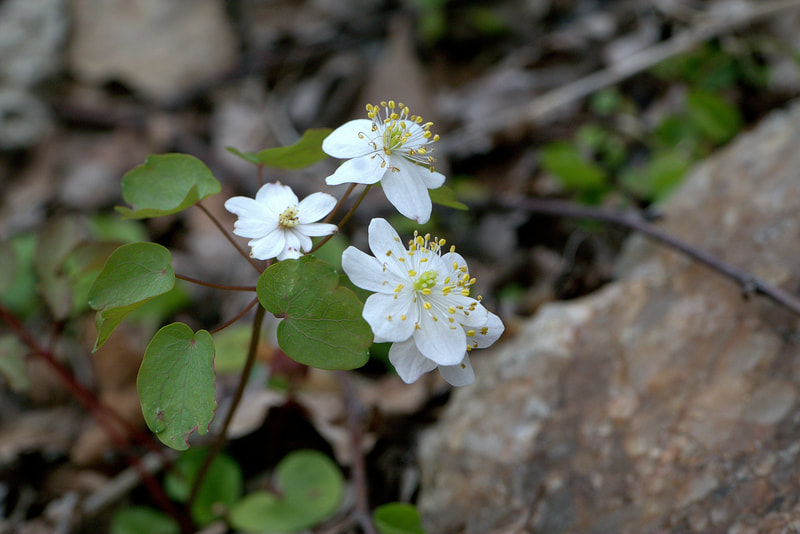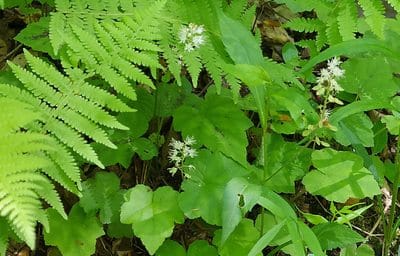Cumberland Plateau/Ridge & Valley Calcareous Cliffs
|
Calcareous Cliffs are vertical or near-vertical rock faces that form as a result of limestone erosion. They usually occur as bluffs along rivers and streams. Often they are small patches embedded within mesic forest. Unlike sandstone, which forms large blocks, limestone often has many ledges that form from the intricate bedding planes, providing many niches for plants to root. A mosaic of moisture conditions, from dry to wet seepage, provides diversity. Limestone erodes quickly, so these cliffs are uncommon, and often host unusual plant assemblages with calcium-loving species.
|
|
Indicator species: Canada columbine, eastern shooting star, sharp-lobed hepatica, purple cliff-brake fern, white ash, and eastern redbud.
What's special: these cliffs can be very picturesque, particularly in the spring when calcium-loving wildflowers are in bloom. Some Rare plants grow on these cliffs.
Related communities: These cliffs are often embedded within Mesic Forests.
Learn MORE HERE about plant adaptations to rocky places.
What's special: these cliffs can be very picturesque, particularly in the spring when calcium-loving wildflowers are in bloom. Some Rare plants grow on these cliffs.
Related communities: These cliffs are often embedded within Mesic Forests.
Learn MORE HERE about plant adaptations to rocky places.
|
Plants
Click on a plant name to see images. Plant names are in alphabetical order by scientific name. Soil/bedrock nutrient traits, such as "rich", "basic", "calcareous" and "mafic" are shown in parentheses for the species where that information is provided in The Flora of the Southern and Mid-Atlantic States, here. Trees Eastern redbud Cercis canadensis White ash Fraxinus americana (rich soils, and in calcareous or mafic soils on dry sites) Eastern redcedar Juniperus virginiana Ironwood (Hophorn beam) Ostrya virginiana Winged elm Ulmus alata Slippery elm Ulmus rubra (most abundant in rocky areas with basic bedrock) Shrubs Smooth hydrangea Hydrangea arborescens Appalachian mock-orange Philadelphis inordorus (rich woodlands and calcareous outcrops) Buckthorn bumelia Sideroxylon lycoides (usually circumneutral, mafic or calcareous substrate) Ground Cover Wildflowers Sharp lobed hepatica Anemone acutiloba (especially calcareous or mafic) Round lobed hepatica Anemone americana Canada columbine Aquiligeia canadensis (especially but by no means entirely on calcareous or mafic) Jack-in-the-pulpit Arisaema triphyllum Common wild ginger Asarum canadense (rich, circumneutral soils) Canada rockcress Boechera canadensis (especially mafic or calcareous) Common smooth rockcress Boechera laevigata (especially over mafic or calcareous) Wild hyacinth Camassia scilloides (circumneutral soils, on limestone) Cutleaf toothwort Cardamine concatenata (rich forests) Broadleaf toothwort Cardamine diphylla (rich forests) Cumberland spurge Euphorbia mercuralina (mafic or calcareous) Crested iris - Iris cristata (rich forests) Early saxifrage Micranthes virginiensis Roundleaf ragwort Packera obovata (nutrient rich, usually over calcareous or mafic) Fernleaf phacelia Phacelia bipinnatifida Blue phlox Phlox divaricata (circumneutral soils) Shooting star (eastern) Primula meadia Bloodroot Sanguinaria canadenis Mountain stonecrop Sedum ternatum (nutrient rich forests) Blue-eyed grass Sisyrinchium atlanticum Rue anemone Thalictrum thalictroides Foamflower Tiarella cordifolia Long-spurred violet Viola rostrata Ferns Northern maidenhair fern Adiantum pedatum (especially over mafic or calcareous rocks) Ebony spleenwort Asplenium platyneuron (especially calcareous rocks and masonry crevices) Maidenhair spleenwort Asplenium trichomanes (slightly to strongly calcareous rocks, mafic rocks, limestone) Walking fern Asplenium rhizophyllum (calcareous sedimentary rocks, mafic rocks) Purple cliff-brake Pellaea atropurpurea (limestone and other calcareous/mafic rocks, rarely in masonry crevices) Resurrection fern Pleopeltis michauxiana |
Representative TreesRepresentative ShrubsRepresentative Ground Layer in order by scientific name. |

